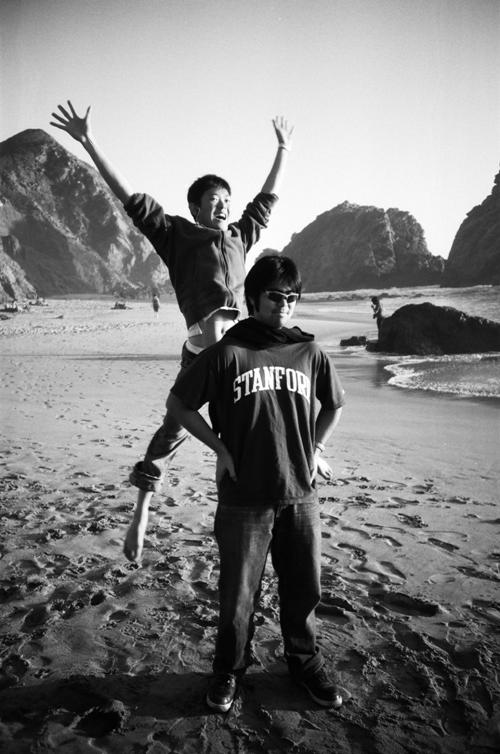LEANN RIMES, BRITTANY MURPHY, JASON LEWIS, JERRY O'CONNELL, EMILIE DE RAVIN, EDDIE CIBRIAN, FAYE DUNAWAY, CYBILL SHEPHERD and IVAN SERGEI Headline All-Star Casts
LOS ANGELES, Feb. 10 /PRNewswire/ -- This Spring, plan your escape as Lifetime Television sets the mood for romance with four all-new Lifetime Original Movies from best-selling sensation Nora Roberts. Airing over four consecutive Saturdays, the films include Nora Roberts' Northern Lights, starring LeAnn Rimes (Holiday in Your Heart), Eddie Cibrian (Ugly Betty) and Rosanna Arquette (Desperately Seeking Susan), premiering Saturday, March 21; Nora Roberts' Midnight Bayou, starring Jerry O'Connell (Crossing Jordan), Lauren Stamile (Grey's Anatomy) and Faye Dunaway (Chinatown), premiering Saturday, March 28; Nora Roberts' High Noon, starring Emilie de Ravin (Lost), Ivan Sergei (Jack and Jill) and Cybill Shepherd (The L Word), premiering Saturday, April 4; and Nora Roberts' Tribute, starring Brittany Murphy (8 Mile) and Jason Lewis (Sex and the City), premiering Saturday, April 11. Acclaimed director Martha Coolidge (Introducing Dorothy Dandridge, Valley Girl) directs Nora Roberts' Tribute. Each movie will air at 9:00 PM (ET/PT).
Nora Roberts' novels Northern Lights, Midnight Bayou, High Noon and Tribute each spent weeks on The New York Times Best Seller list upon initial release. The April 11 television premiere of Tribute, an immediate best-seller in hardcover last July, coincides with the paperback release of the book on March 31.
Following the Network's enormous ratings success with previous Nora Roberts' adaptations, Lifetime Television has once again joined forces with Mandalay Television and Stephanie Germain Productions to produce the all-new original movies. In 2007, the four Nora Roberts telefilms cumulatively reached more than 34 million viewers and Nora Roberts' Angels Fall was the highest rated Lifetime Original Movie of the year.
ABOUT NORA ROBERTS' NORTHERN LIGHTS (MARCH 21, 2009)
In an attempt to start a new life and forget the recent traumatic death of his work partner, former Baltimore policeman Nate Burns (Cibrian) accepts the job of chief of police in the small, remote town of Lunacy, Alaska. Nate is not looking for romance, but, the moment he meets Meg Galligan (Rimes), an independent and feisty bush pilot with her own demons, he finds himself falling in love. The town is rocked when the body of Meg's father, a man who Meg believed had abandoned her and her mother Charlene (Arquette) 16 years ago, turns up in a mountain cave. Nate quickly finds himself in the middle of a high-profile murder investigation and must use his big-city survival instincts to solve the mystery that threatens his new life and new love.
ABOUT NORA ROBERTS' MIDNIGHT BAYOU (MARCH 28, 2009)
Harvard-educated lawyer Declan Fitzpatrick (O'Connell) impulsively gives up his comfortable life to buy Manet Hall, a newly restored plantation manor near New Orleans. Legend has it that the house is haunted, and, shortly after Declan moves in, he starts hearing voices and seeing seemingly inexplicable apparitions. Declan is also distracted by his undeniable attraction to Cajun local Lena Simone (Stamile), who grew up on the bayou with her grandmother, Odette (Dunaway), and who also has her own mysterious connection to the manor. Living in the house, Declan begins to have visions of events that took place in the mansion during centuries past. With the help of Odette, Declan and Lena realize that they are inextricably linked to Manet Hall and uncover a shocking secret that has been hidden for more than 100 years.
ABOUT NORA ROBERTS' HIGH NOON (APRIL 4, 2009)
Lieutenant Phoebe McNamara (de Ravin) is an expert hostage negotiator who juggles her high pressure career with the demands of raising her young daughter and contending with her agoraphobic mother, Essie (Shepherd). When Phoebe meets handsome bar owner Duncan Swift (Sergei), he can't resist her take-charge attitude and attempts to earn her affections. Though she tries to resists his charms, Phoebe soon realizes no amount of negotiation will keep Duncan at arm's length. Her life takes a turn for the worst when she is attacked by an unknown assailant and then begins to receive a series of mysterious, threatening messages. Phoebe soon discovers she is the target of a psychopathic killer set out to destroy her both personally and professionally.
ABOUT NORA ROBERTS' TRIBUTE (APRIL 11, 2009)
Cilla McGowen (Murphy) is a former child star who has found more satisfying work restoring old houses. In search of a normal life, Cilla buys her grandmother's farmhouse in Virginia's Shenandoah Valley to rescue it from ruin. Her hope for serenity is soon eclipsed by haunting dreams of her famous grandmother, who died of a supposed overdose in the house more than 30 years ago. Cilla soon forges a romantic relationship with Ford Sawyer (Lewis), her handsome new neighbor, who ultimately comforts and protects her when her dark dreams and family secrets spiral into a real-life nightmare.
The Nora Roberts adaptations join an impressive list of novels developed into Lifetime Original Movies, including the top rated basic cable movie for 2008, Kim Edwards' The Memory Keeper's Daughter, starring Dermot Mulroney, Emily Watson and Gretchen Mol, and Jodi Picoult's The Tenth Circle, starring Kelly Preston, Ron Eldard and Brittany Robertson.
ABOUT NORA ROBERTS
Since publishing her first novel in 1981, Roberts has gone on to become a #1 New York Times best-selling sensation. With more than 300 million books in print, Roberts' novels have spent a combined 155 weeks at the #1 spot on the coveted Times list. Since 1999, every book published under her name has hit the New York Times Best Seller list.
Roberts is a member of several writers groups and has won countless awards from her colleagues and the publishing industry. Roberts is represented by literary agent Amy Berkower at Writers House, LLC and by CAA. Roberts' books are published by Penguin Group (US).
ABOUT STEPHANIE GERMAIN PRODUCTIONS
In addition to producing the first four Nora Roberts Lifetime Original Movies, Stephanie Germain produced the Emmy(R) nominated Ike: Countdown to D-Day which starred Tom Selleck for A&E, the 2004 summer blockbuster The Day After Tomorrow which starred Dennis Quaid and Jake Gyllenhaal and directed by Roland Emmerich (Independence Day) and Lifetime's Gracie's Choice, starring Kristin Bell, Diane Ladd and Ann Heche. Gracie's Choice premiered in January 2004 and became one of cable's highest rated films, with Heche garnering an Emmy(R) nomination for her performance. Some additional television credits include CBS' The Pilot's Wife, based on Anita Shreve's bestseller and starring Emmy and Oscar(R) winner Christine Lahti; the ABC special effects telefilm Superfire, created by best-selling authors Richard Preston and Doug Preston; ABC's King of the World: The Muhammad Ali Story, based on the book by Pulitzer Prize(R) winner David Remnick and starring Terrence Howard; ABC's Holiday In Your Heart, starring LeAnn Rimes and Bernadette Peters; and CBS' miniseries The Doris Duke Story, starring Lauren Bacall and Richard Chamberlain. For two seasons, Germain co-produced Showtime's one-hour series Jeremiah, starring Luke Perry.
ABOUT MANDALAY TELEVISION
Mandalay Television has achieved great success in series, long form television movies and miniseries. Mandalay's critically acclaimed, Peabody Award(R)-winning series Brotherhood is in its third season on Showtime. Over the past decade, Mandalay's movies and miniseries have produced some of the strongest ratings of all-time, including Dean Koontz's Intensity, a four-hour miniseries based on the best seller, and the highest rated miniseries on Fox; First Daughter, a two-hour original movie starring Mariel Hemingway for TBS, which was the highest rated basic cable movie in history and spawned two sequels, First Target and First Shot; Blood Crime, which launched USA's Crime Friday and was the highest rated original program for the Network in 2002; and The Linda McCartney Story for CBS. Mandalay Television's groundbreaking micro series, RPM, starring Johnathon Schaech, recently aired on TNT.
ABOUT LIFETIME TELEVISION
Lifetime is the leader in women's television and one of the top-rated basic cable television networks. A diverse, multi-media company, Lifetime is committed to offering the highest quality entertainment and information programming, and advocating a wide range of issues affecting women and their families. Lifetime Television, Lifetime Movie Network, Lifetime Real Women and Lifetime Digital (including myLifetime.com) are part of Lifetime Entertainment Services, a 50/50 joint venture of Hearst Corporation and The Walt Disney Company.
Swept Away


Driving down Highway 1 strongly reminded me of the trip down to the Amalfi Coast in Italy. Vertiginous cliffs on the side of the road dropped down into the Pacific Ocean, while we talked about the sad state of our command of the Chinese language. Carmel by the Sea is so so quaint. It’s almost Disneyland-esque.

This was to the right of Bixby Bridge one picture ago.




Pfeiffer Beach was amazing. Unlike beaches with a never ending stretch of sand, this one had rocky outcrops that created some spectacular breaking of waves.

There were about 10 photographers standing there with their cameras aimed at this hole. I don’t know what they were waiting for.









Each day brings another indication of just how poorly the nation's economy is performing. The latest: Statistics released Friday revealed that an additional 598,000 Americans were thrown out of work in January and the unemployment rate jumped to 7.6 percent.
As bad as those numbers are -- and they're truly bad -- it's important to remember that the great majority of American workers are not only still employed but their pay has been rising at a healthy pace. Average wages in January were up 3.9 percent from a year ago.
So we climbed up onto a huge rock to see the sun set, and as we were getting down, the rising tide swept Morris’ shoes away. He would have lost them if not for Daphne and some kids. It was the funniest thing.
It's vital for federal and state lawmakers to recognize that reality as they rush to pass stimulus packages that promise short-term payoffs but carry long-term costs.
The Congressional Budget Office this week released a report indicating that the economic stimulus package now in Congress would indeed spur solid economic growth in the next two years. But the CBO also found that the plan would depress growth beyond 2011 because it would add significantly to the federal debt.
Lawmakers in the Indiana Statehouse also should ponder whether their understandable desire to provide immediate help to unemployed Hoosiers could lead to measures that hurt in the long haul. The House Ways and Means Committee this week approved a bill that would shift $800 million from the state's Major Moves highway and bridge program to local road projects. Two problems arise from that proposal. One, it would merely shift any jobs created from state to local initiatives. Two, the state projects were selected in part because they would improve Indiana's overall economic climate by strengthening key infrastructure.
Should lawmakers stand still while the economy crumbles? Of course not. But grand efforts to create jobs may carry unintended consequences that do more harm than good.
Smaller, more targeted efforts, in contrast, could help many who are hurting.
Indiana Senate Bill 281 is one such small but worthwhile step to assist Hoosiers in need. The bill, which would enable taxpayers to check off a donation to local food banks when filing state tax returns, could provide invaluable support for charities around the state that have seen demand for services soar.
Obviously, such small-bore measures won't fix the economy. But that's something of the point. Rather than adopt large and expensive "solutions'' that carry high legacy costs, it might be wiser for federal and state governments to take a series of modest steps that help Americans ride out the economic storm until it subsides.
My Hometown Indigenous Native American Cultures Were Swept Away!
Here's a two part question that I have mulled over, both intellectually and as it has shaped my own magical practice, for years. For me, the absence of indigenous Native America cultures from/in/around my hometown as I was growing up has nudged me toward paths that do not look toward those cultures as magical resources. As my own practice developed, I never felt much need to draw upon hometown, or other, Native American magical traditions.
A. ) What were the pre-contact indigenous cultures of your hometown (say, within a 20 miles radius)? What I mean by "hometown" is where you grew up, not where you reside now.
B.) Did those indigenous cultures influence how you thought about magic and spirituality? Did you know, or know of, any living representatives of those indigenous cultures in your hometown? Or nearby? Did they influence how you thought about magic and spirituality? Did any of them act as teachers or guides in learning about magic and spirituality? Did they teach or talk about their culture's magic and spirituality?
Here's my take:
A.) I grew up in Vallejo, CA, at the North end of the San Francisco Bay/Delta region. Pre-European contact, the region was inhabited by a diverse constellation of Native American cultures, including Karkins, Bay Miwoks, and Patwins (Suisunes and others). Vallejo was at the boundary of several different tribal areas.
European contact in this part of Northern California happened rather late, especially North of the SF Bay complex. San Francisco was discovered in 1775. Because it was difficult to cross the bays, Europeans did not have much contact with the peoples to the North until the early 1800s.
Following missionization, the Gold Rush, and subsequent American settlement, virtually none of these indigenous Native American cultures survived. Disease, warfare, coercive resettlement, and flight from an intolerable situation had conclusively disrupted or extinguished them.
By the time I was growing up in the mid-20th Century, only place names and sketchy local folklore commemorated these indigenous Native American cultures of my hometown. (My home town county, for instance was named Solano after the Spanish name of a Suisune leader, Sem-Yeto, who lived during the early to mid 1800s.)
B.) The indigenous Native American cultures of my hometown influenced my thinking about magic and spirituality mostly because they were not present to provide any influence. Even if I'd wanted to (and I don't recall any pressing curiosity), I could not have learned much about them or found any living teachers or guides.
My early explorations of magic and spirituality involved Western occulture and direct contact with the Land around me. Unlike many others who grew up with surviving indigenous Native American cultures, I had no opportunity to look to them as mediators in my poking around--magically speaking--the Land and the various forces and presences inhabiting the Land.
The later result of virtually no indigenous Native American presence on my practice has been less cultural borrowing or poaching from any Native American sources. Because I grew up without any hometown Native American cultures to poach even if I'd wanted to, and so had to turn to Western occulture and direct contact with the Land, I didn't look at any Native American culture as inherently more magical or spiritual than what I was doing myself.
So I didn't feel much of an impulse to poach or borrow much from any Native American magical tradition or spirituality. Or to resurrect or reconstruct the tradition of my hometown indigenous Native American cultures.
No comments:
Post a Comment